Highlights
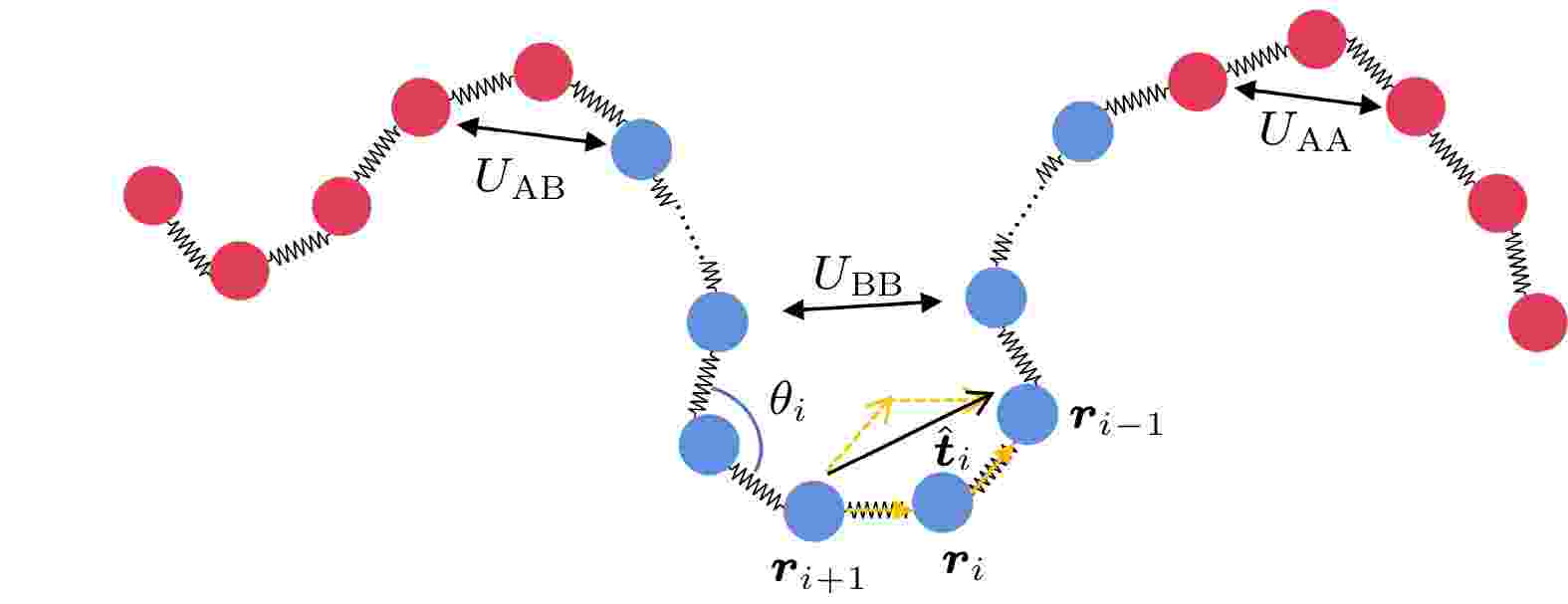
Abstract +
The self-propulsion of active matter leads to many non-equilibrium self-organization phenomena, and the conformational freedom of polymer chains can produce unique equilibrium self-assembly behaviors, which stimulates cross-disciplinary research between active matter and polymer physics. In this work, we use molecular dynamics simulations to investigate the modulation of self-propulsion activity on the gel transition of ABA triblock copolymers. The research results indicate that under different active forces and attractive strengths, the gel states formed by ABA copolymers can be divided into three types: stable polymer gels with stable percolation paths and uniform spatial distribution, dynamic polymer gels with constantly changing percolation path and strand conformation, and collapsed polymer gels aggregating into large percolating clusters. The spatial uniformity of active gels is related not only to the concentration fluctuation during the formation of the network, but also to the inconsistent movement of the network chains caused by the activity, which is manifested in the rotation of crosslinking points in the flexible system and the directional movement of the bundles along their contour directions in the semi-flexible and rigid systems. In terms of topological conformation of polymer networks, when the attractive strength between A blocks is strong, the proportion of loop increases with the active force increasing. When attractive strength is weak, inter- and intra-chain binding are unstable, and the conformation is easily changed by the activity drive, noise and other chain collisions, so the proportion of loop decreases with the active force increasing. The branching number of crosslinking points varies with active force, which is not only affected by the attraction strength, but also related to the rigidity of the network chain. Generally, the branch number of crosslinking points in semi-flexible networks is larger than that in flexible and rigid networks. In addition, the directional motion of active polymers induces anomalous diffusion in stable polymer gels. This study contributes to the understanding of the collective behavior of active polymers and serves as a guide for designing and implementing active polymeric materials.
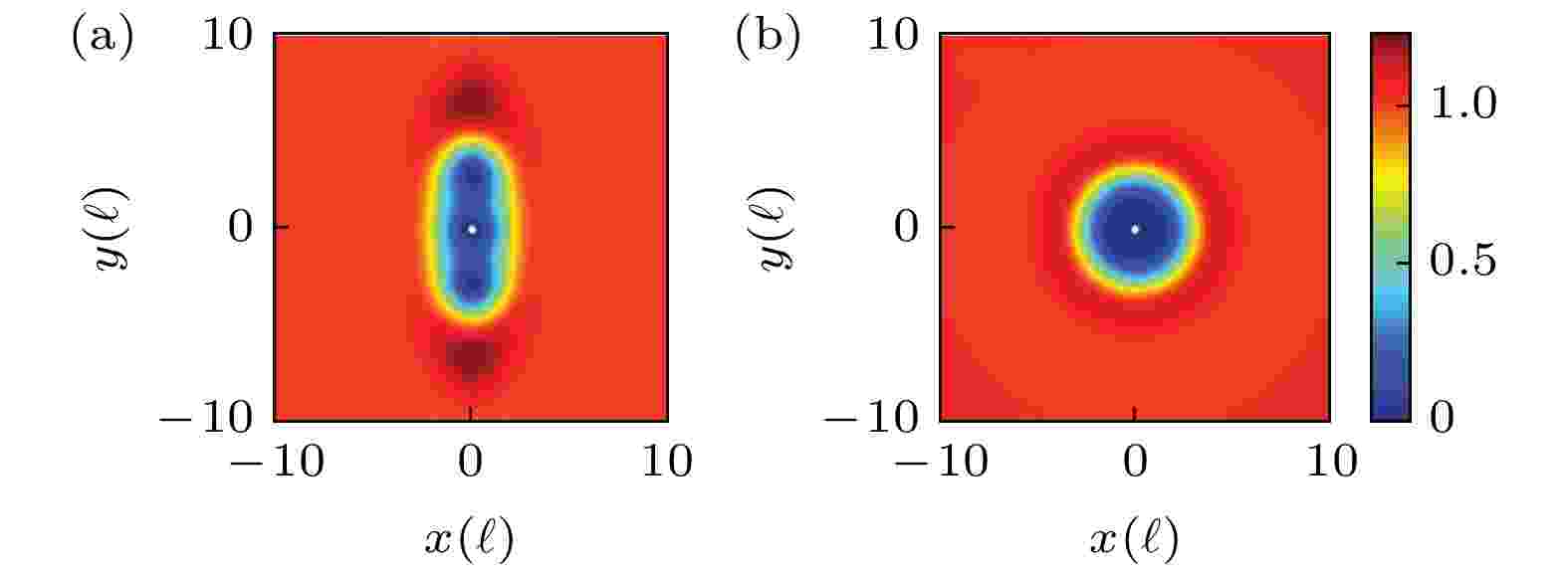
Abstract +
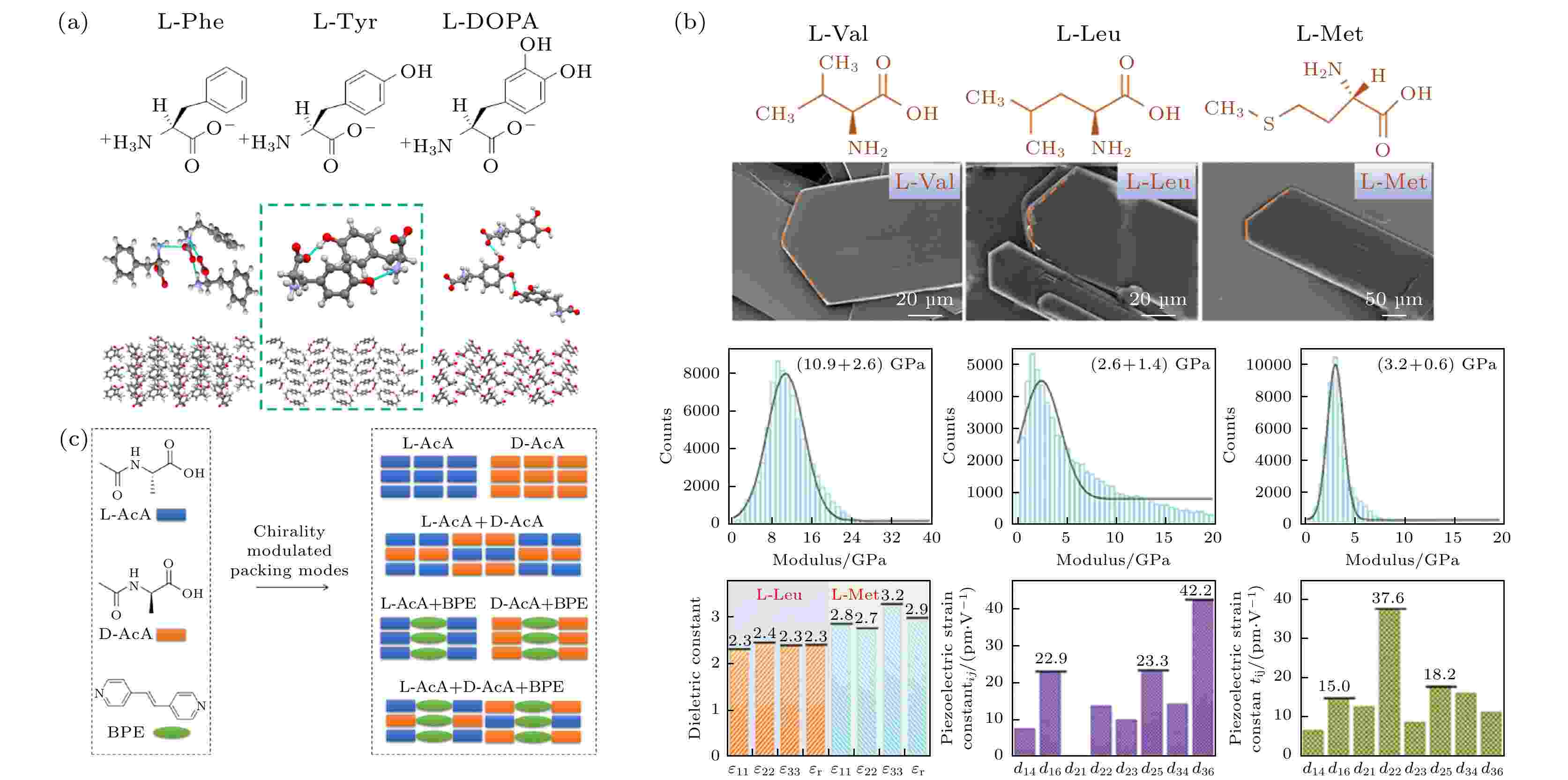
The 90th Anniversary ofActa Physica Sinica
EDITOR'S SUGGESTION
2024, 73 (17): 178103.
doi:10.7498/aps.73.20240947
Abstract +
Self-assembling biomolecular soft materials are a novel type of soft matter formed through the self-assembly process by using biomolecules or biomolecular building blocks. The characteristics of bio-sourced origin and assembly driven by weak interactions endow these materials with advantages such as high biocompatibility, reversible assembly, dynamic responsiveness, and controllable microstructures. These properties offer immense potential for development in fields such as biomedicine, tissue engineering, and flexible sensing. This paper concisely reviews the fundamental construction principles of self-assembling biomolecular soft materials and discusses three categories, i.e. nanomaterials, gel materials, and composite materials, by using amino acids and peptides as examples of assembly units. The specific self-assembly molecular mechanisms, material construction strategies, and functional application scenarios of these materials are elucidated. We anticipate that the research on self-assembling soft matter biomolecular materials will evolve from exploring structural units and measuring properties to customizing multifunctional properties and integrating advanced applications. This will lead to the development of novel composite intelligent biomolecular soft matter materials, and further promoting their applications in biomedicine, organic semiconductors, and soft robotics.
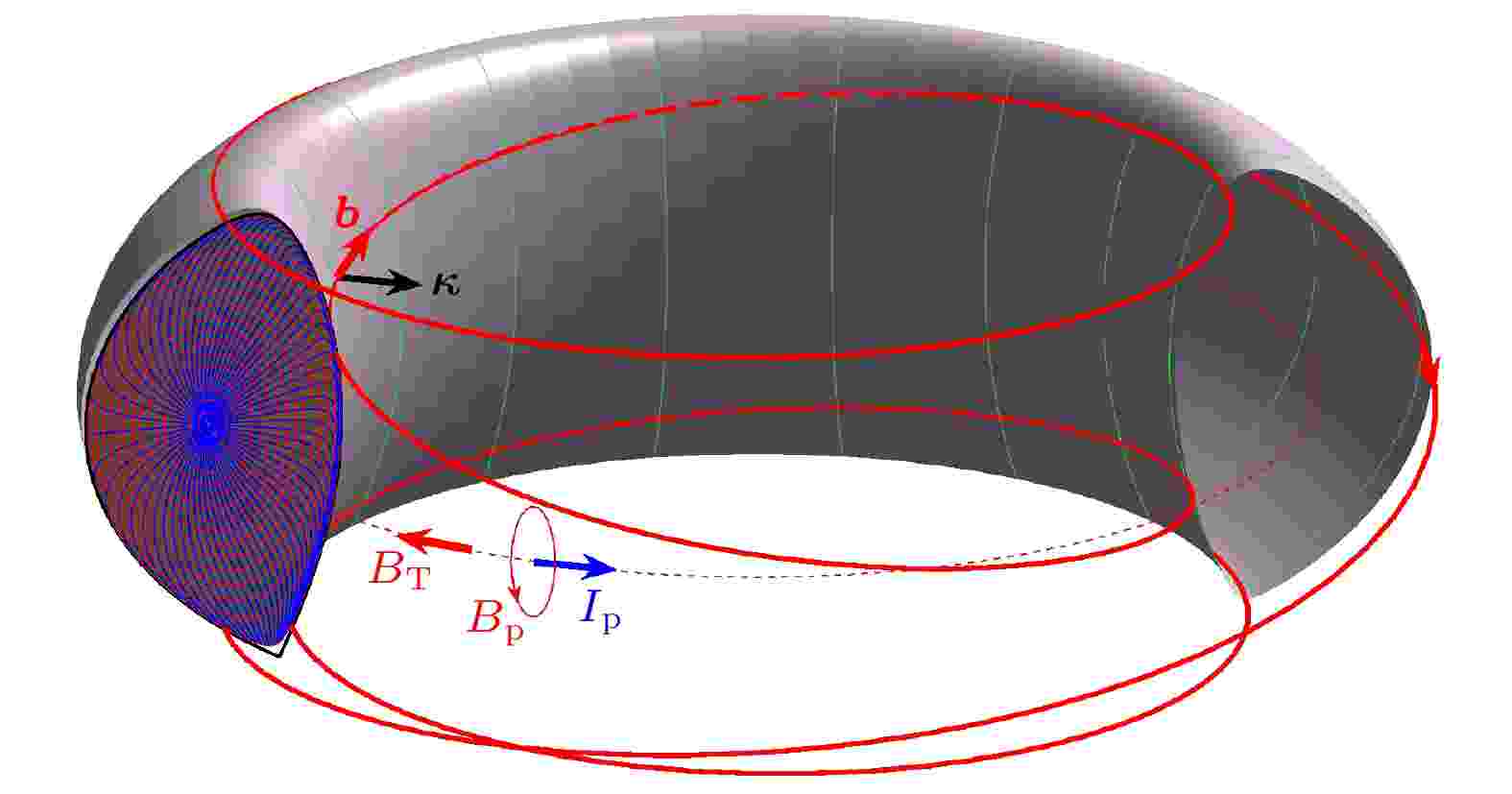
The 90th Anniversary ofActa Physica Sinica
EDITOR'S SUGGESTION
2024, 73 (17): 175202.
doi:10.7498/aps.73.20240831
Abstract +
Current status and challenges of key physics related to high-confinement operational scenarios and energetic particle confinement are briefly reviewed from the perspective of design and operation of tokamak-based fusion reactors. In the past few decades, significant progress has been made in the research on high-confinement mode physics, i.e. the main stability and confinement constraints on operational window of a fusion reactor have been identified, and some control methods for adjusting plasma kinetic profiles to optimize performance have been developed. Several operational scenarios, including inductive, hybrid and steady-stateetc, which are potentially applicable for future reactors, have been developed. In the conditions that fusion alpha particle self-heating is predominant and shear Alfvén wave (SAW) instabilities potentially dominate fusion alpha particle transport, the SAW linear stability properties and excitation mechanisms are understood in depth, and the SAW instabilities nonlinear saturation, alpha particle confinement, and the influence of the heating deposition and the micro-turbulence regulation on fusion profile are under extensive investigation. The magnetically confined fusion research has entered a new stage of ignition and burning plasma physics, and new challenges that are faced are addressed, including whether efficient self-heating of plasmas by fusion alpha particles can be achieved, how the plasma stability and high-confinement can be maintained through the active control of key plasma profiles under the condition of dominant alpha particle heating, and whether it is possible to establish accurate models to predict long time scale complex dynamical evolution of fusion plasmasetc. Solving these key problems will lay a solid scientific foundation for designing and operating future fusion reactors as well as promote the development of plasma science.

SPECIAL TOPIC—Quantum communication and quantum network
EDITOR'S SUGGESTION
2024, 73 (17): 170301.
doi:10.7498/aps.73.20240819
Abstract +
Most of the existing metropolitan quantum networks are implemented based on a single quantum key distribution protocol, and interconnecting metropolitan quantum networks implemented by different protocols are the development trend of large-scale quantum networks, but there are still some problems in the provision of inter-domain key services, such as low possibility of success and mismatch between key supply and demand. To solve the above problems, this paper proposes two on-demand inter-domain key service provisioning strategies for multi-domain cross-protocol quantum networks, namely, on-demand provisioning strategy based on BB84 bypass first (BB84-BF) and on-demand provisioning strategy based on MDI bypass first (MDI-BF). Meanwhile, a service provisioning model for multi-domain cross-protocol quantum networks is constructed, and an on-demand inter-domain key service provisioning algorithm is designed. Moreover, numerical simulations and performance evaluation are carried out under two scenarios: high key rate demand and low key rate demand for two-domain and three-domain quantum network topologies. Simulation results verify that the proposed on-demand provisioning strategies have better applicability to different multi-domain quantum networks. In addition, for different key rate requirements, the MDI-BF strategy and BB84-BF strategys have different performance advantages under different performance indicators. For example, in terms of the success possibility of inter-domain key service requests, the MDI-BF strategy is more suitable for the low key rate requirements (~30% higher than the traditional strategies in two domain topologies), while the BB84-BF strategy is more suitable for the high key rate requirements (~19% higher than the traditional strategies under two domain topologies). In addition, compared with the traditional strategies, the proposed on-demand provisioning strategies can increase the balance degree between key supply and demand by more than one order of magnitude. Hence, the proposed strategies can reduce the cost of inter-domain key service provisioning and improve the realistic security level.
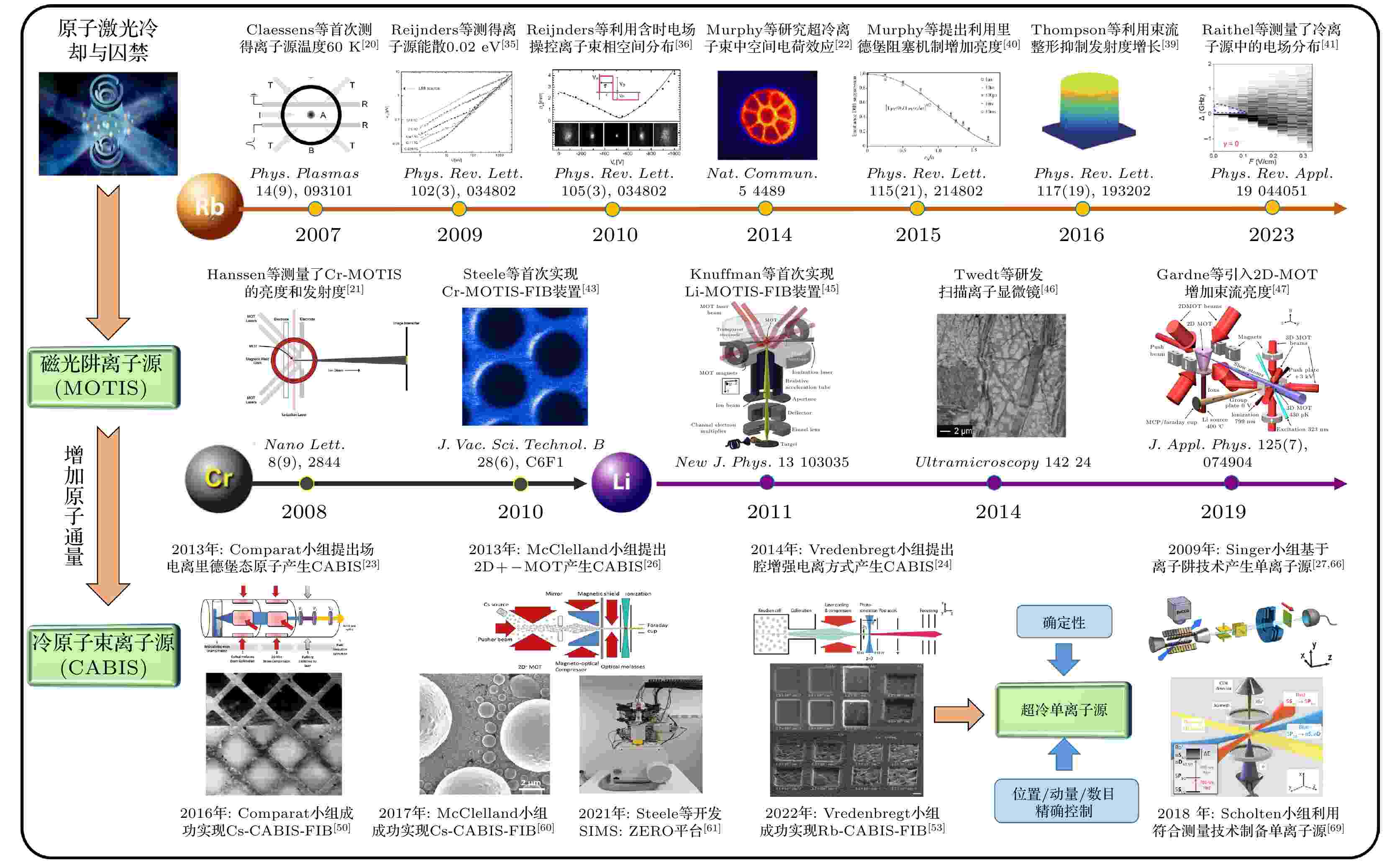
INSTRUMENTATION AND MEASUREMENT
EDITOR'S SUGGESTION
2024, 73 (17): 173701.
doi:10.7498/aps.73.20240695
Abstract +
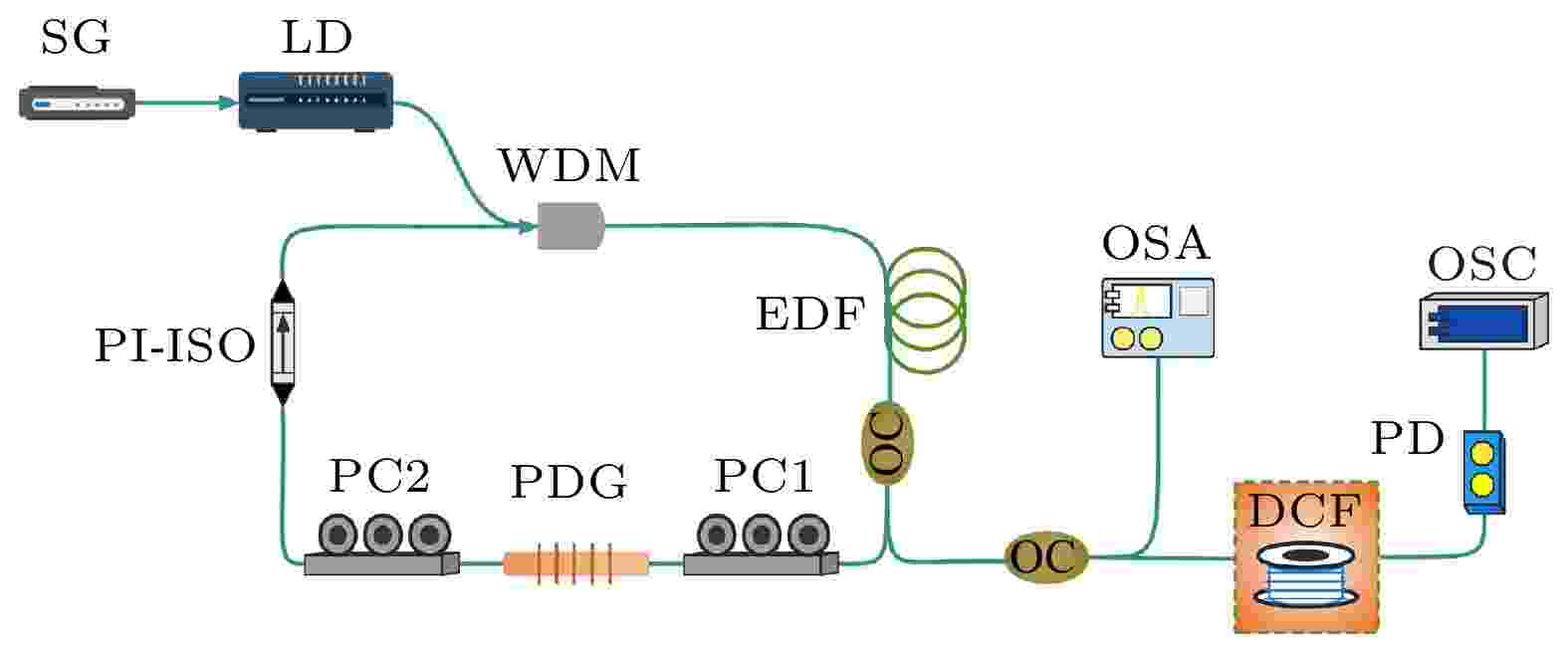
EDITOR'S SUGGESTION
2024, 73 (17): 174201.
doi:10.7498/aps.73.20240673
Abstract +
In this paper, the mode-locked pulse generation and annihilation dynamics in ultrafast fiber lasers based on pump intensity modulation are investigated by using real-time Fourier transform spectral probing. The results show that the laser outputs stable mode-locked pulses when the pump modulation voltage is at a high level. As the modulation voltage jumps to a low level, the intensity of the mode-locked pulse decreases, and then undergoes a period of decaying oscillation before annihilation occurs, and after ~5 μs the soliton is reconstructed from the noise, accompanied by the generation of theQ-modulation instability. In the low-level phase, the annihilation process in the laser cavity occurs continuously with a period of ~55 μs. By changing the duty cycle of the modulation pump, it is possible to control the the number of times solitons continuously annihilate under low-level modulation. Further, the continuous switching process of mode-locking and soliton annihilation is related to the modulation frequency of the pump, and the increase of the modulation frequency can effectively shorten the duration of the two states, thus reducing the number of soliton annihilations. In addition, by reducing the value of the low level, the gain in the laser cavity can be reduced, resulting in a shorter period of successive soliton annihilation. The results of the study are conducive to an in-depth understanding of the formation and annihilation dynamics of solitons, and provide new perspectives for developing various operation mechanisms of ultrafast lasers.
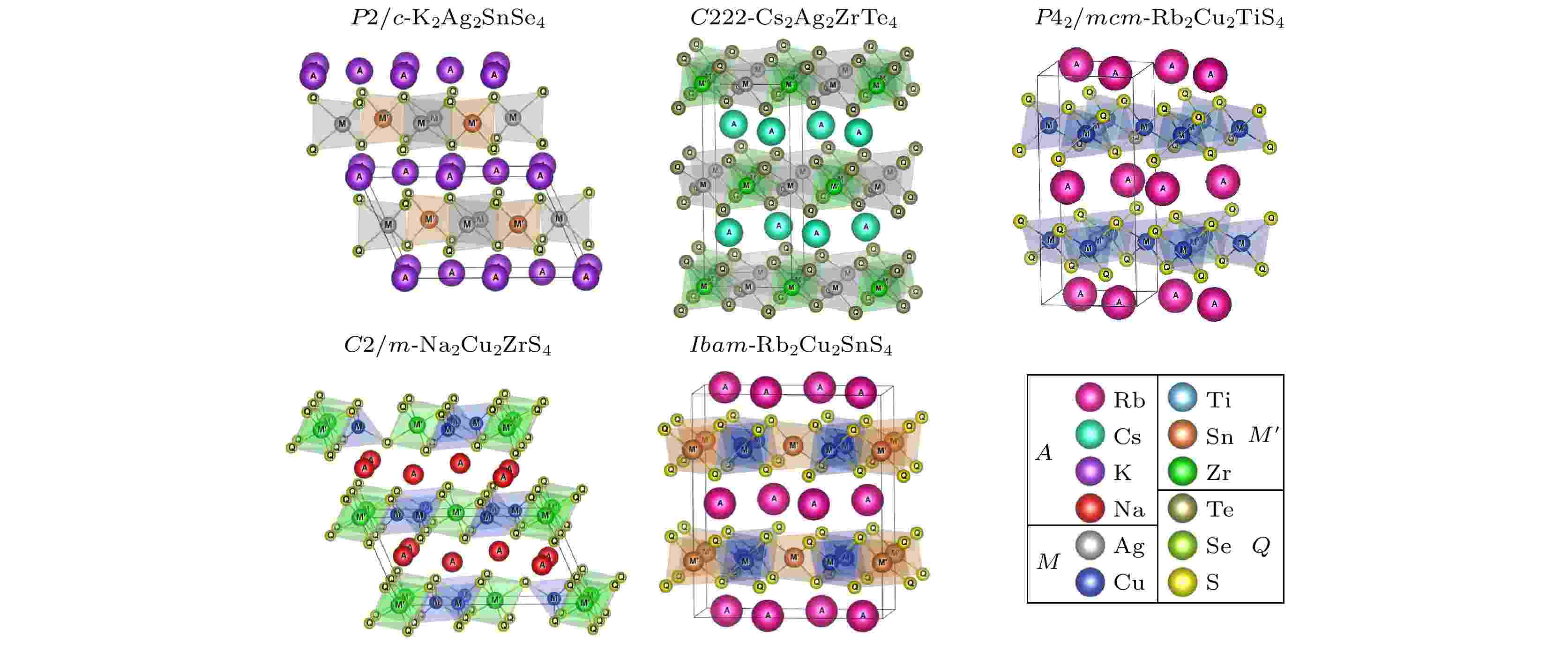
Abstract +

INSTRUMENTATION AND MEASUREMENT
EDITOR'S SUGGESTION
Development of a transmission X-ray nanometer-resolution microscope based on laboratory light source
2024, 73 (17): 178701.
doi:10.7498/aps.73.20240727
Abstract +
Transmission X-ray microscope (TXM) is a high-precision, cutting-edge X-ray imaging instrument, which is a marvel of modern science and technology. It enables non-destructive imaging on a nanoscale, providing a powerful research tool for various scientific fields such as physics, life science, materials science, and chemistry. Although many synchrotron radiation facilities at home and abroad have established nano-CT experimental stations with TXM as the core, currently only a few companies internationally can provide commercial TXM instrument based on laboratory X-ray sources. The primary reason is that this instrument involves numerous engineering challenges, including high-brightness laboratory X-ray sources, high-resolution X-ray optical elements, high-precision sample stage systems, high-sensitivity detectors, and extremely strict requirements for environmental factors such as temperature and vibration. In order to promote the development of high-end X-ray imaging instruments, it is necessary to overcome the technological bottlenecks encountered in the development of X-ray nano-CT. Discussed in this work mainly are the instrument design of a laboratory transmission X-ray microscope with working energy of 5.4 keV and the results of full-field imaging experiments. To start with, the design of the TXM instrument is introduced in detail. The TXM instrument is equipped with several key components, including laboratory X-ray source, condenser, sample stage module, zone plate, and imaging detector. The TXM instrument adopts a modular vibration isolation design and is equipped with a dedicated temperature control system. The main imaging magnifications of the TXM instrument are 50×, 75×, and 100×, and the corresponding optical parameters and photos are introduced. The X-ray source used is a micro-focus X-ray source, operating in Cr target mode, with a focal spot size of 20 μm and a Ka characteristic spectrum brightness of
$ 5\times {10}^{9}~\rm {photons}/({mm}^2\cdot {mrad}^2\cdot s)$
. The X-ray source provides illumination for the sample after being focused by an ellipsoidal condenser. The outer ring of the condenser's illumination ring corresponds to a numerical aperture (NA) of
$ {NA}_{2} = 3.196~\rm mrad $
, and the inner ring corresponds to a numerical aperture of
$ {NA}_{1} = 1.9086~\rm mrad $
. Under these conditions, the limit resolution of this TXM instrument is 22 nm. The zone plate has a diameter of 70μm, a focal length of 8.7mm, and 616 zones. The TXM instrument uses a high-resolution optical coupling detector equipped with a scientific-grade CMOS camera with an effective pixel size of 7.52μm. The optical coupling detector is equipped with 2× and 10× high numerical aperture objectives. When the TXM instrument magnification is 50×, the effective pixel size of the TXM instrument is 15 nm. In addition,a gold resolution test card is used as the sample to determine the imaging field of view of the TXM instrument by observing the size of the imaging area of the test card on the detector, and to determine the imaging resolution of the TXM instrument by observing the line width of the star-shaped target in the center of the test card. Experimental results show that the TXM instrument has an imaging field of view of 26μm and can achieve the clear imaging of characteristic structure with a line width of 30 nm. The radial power spectrum curve of the Siemens Star shows this TXM instrument has the potential to resolve 28.6-nm half pitch line pair features. Finally, we draw some conclusions and present outlook. At present, imaging of 30-nm-wide line features has been realized, but the imaging of 30-nm half pitch line pair feature has not yet been achieved, and the limit resolution has not reached the design value, either. We will continue to explore the potential for upgrading the imaging resolution of the laboratory TXM in future work.
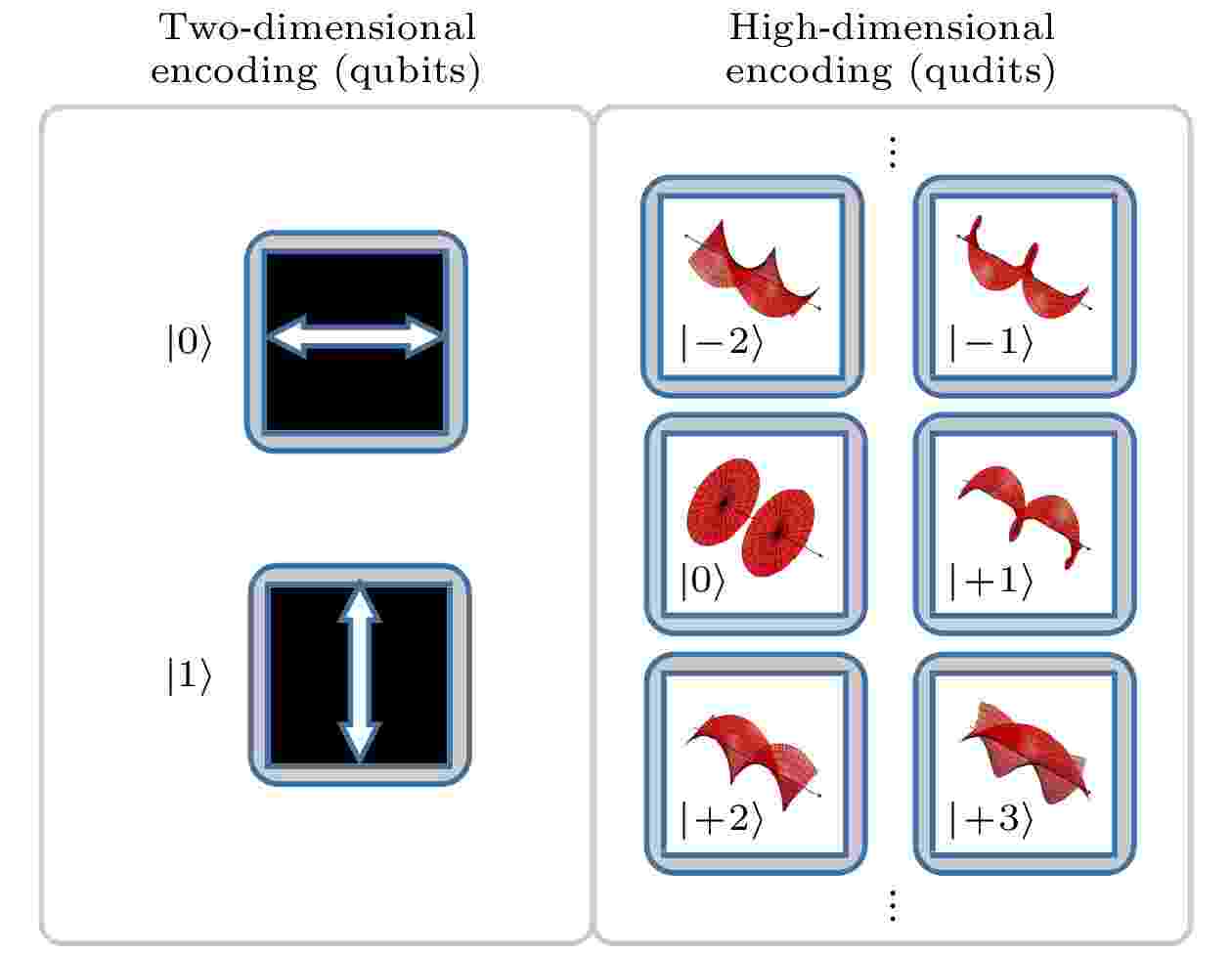
The 90th Anniversary ofActa Physica Sinica·COVER ARTICLE
COVER ARTICLE
2024, 73 (16): 164204.
doi:10.7498/aps.73.20240791
Abstract +
Quantum light sources are one of key devices for quantum information processing, and they are also the important foundation for applications such as in quantum computing, quantum communication, and quantum simulation. Improving the capacity of quantum information coding by using the quantum light source is a major challenge in the development of quantum information technology. Photons with a helical phase front can carry a discrete, unlimited but quantized amount of orbital angular momentum (OAM). The infinite number of states with different OAMs can greatly increase the capacity of optical communication and information processing in quantum regimes. To date photons carrying OAM have mainly been generated by using bulk crystals, which limits the efficiency and the scalability of the source. With the advancement of quantum photonic technology, many significant quantum photonic devices can now be realized on integrated chips. However, creating high-dimensional OAM quantum states at a micro-nano scale is still a challenge. And the research of harnessing high-dimensional OAM mode by using integrated quantum photonic technologies is still in its infancy. Here, the authors review the recent progress and discuss the integrated quantum light sources with OAM. The authors introduce the research progress of using OAM for both single photons and entangled photons and emphasize the exciting work on pushing boundaries in high-dimensional quantum states. This may pave the way for the research and practical applications of high-dimensional quantum light sources.

- 1
- 2
- 3
- 4
- 5
- ...
- 171
- 172













